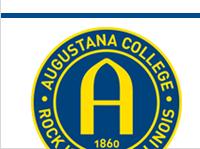Early Education for Swedish Immigrant Children
Exhibit on view September 2012–February 2013
Many Swedish immigrants were laborers in the Old Country and their children were often expected to follow in their footsteps. The education of their children largely consisted of preparing them for their occupation. To them, education was not the same as going to school; education was integrated into other aspects of family and community and rooted in traditions of language and faith.
In the New World, education took on a different meaning. School was seen as a means to teach immigrant children how to be an American citizen. As the American school system became compulsory and unified, religious education and Swedish language instruction became difficult to obtain, especially for immigrant children who could not attend parochial schools. Students learned English and studied subjects that were unrelated to the old, assumed, occupations of the Old Country.
Education also had the effect of assimilating Swedish immigrant children through contact and communication with other ethnic groups. John Dewey, a well-known educational reformer, remarked that through American education, immigrant children “lose the positive and conservative value of their own traditions . . . they even learn to despise the dress, bearing, habits, language and beliefs of their parents.”
The traditions of language and faith, however, were still a large part of immigrant children’s education, taking place at home, in church, and through Sunday school. Thus, the education and schooling for Swedish immigrant children took several forms, involving public schools, family influence and attendance at church. This duality in education also served the joint purpose of fostering a new, Swedish-American, identity while maintaining language and religious education traditions.
Consider these questions:
• What do you think some challenges would be for a Swedish immigrant attending school in the U.S.?
• What role did education play in a young immigrant’s life?
• Why do you think these children would want to, or not want to, pursue their education?
Sources
“Scandinavian immigrants and education in North America,” Philip J. Anderson, Dag Blanck and Peter Kivisto. Chicag: Swedish-American Historical Society, 1995.
“Läsebok för Folkskolan.” Stockholm, 1915 (first published 1868).
“Församlingsskolans Läsebok.” Augustana Book Concern, Rock Island, IL, 1890.
“Andra Läseboken.” Augustana Book Concern, Rock Island, IL, 1910
“English for Foreigners, Book Two,” Sara R. O’Brien. Boston: Houghton Mifflin Co., ca. 1909
“Graded Reader for Classes in Swedish.” Augustana Book Concern, Rock Island, IL, 1921
“Söndagsskolbok.” Rock Island, Ill.: Lutheran Augustana Book Concern, 1903
MSS P:339 Scandinavian American Portrait Collection
MSS P:289 Col. Robert E. Swanson family papers
MSS P:75 Sven T. Olson family papers
















